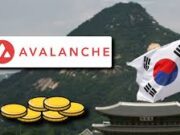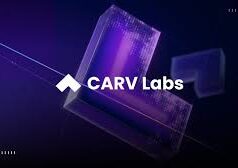In late October, the Astros Perp DEX (built on the SUI network) entered its Soft Launch Phase 2, and within its first week of operations the platform recorded over $100 million in trading volume. (BlockBeats)
That strong early performance has grabbed the attention of traders, ecosystem watchers and incentive-design fans alike.
What’s especially interesting, and worth digging into, is the clever airdrop & “daily lucky draw” programme that Astros is using to encourage participation. Because it isn’t just “trade and earn” — it’s “trade, get participation credentials (Ores), and unlock future benefits”. That layered incentive is worth exploring.
How the Ores Lucky Draw works
Here’s a breakdown of what the programme involves and how it’s designed:
1. Daily drawing tied to trading volume
Astros introduced a feature called the “Astros Ores Daily Lucky Draw”. Each day, users who have traded on the platform qualify for a chance to win an “Ore Box” (i.e., certain number of Ores) simply by virtue of trading. (X (formerly Twitter))
Put differently: you trade, you get entries (based on volume) into a draw. The draw awards Ores randomly among participants.
2. Ores are limited-issuance credentials
These “Ores” are not just decorative; they serve a broader role in the ecosystem. The platform states that Ores act as limited-issuance credentials — meaning there are only so many, they can’t just be infinitely issued — and they will be used to unlock future rights and additional airdrops within the Astros / SUI ecosystem. (BlockBeats)
In other words: getting Ores early gives you a kind of membership ticket to future benefits.
3. Incentive aligned to participation, not just holding
Because the daily draw is tied to trading volume, it rewards active engagement rather than passive holding. That means the programme motivates users to interact with the platform (open trades, volume counts).
And because the Ores credentials will matter later, it encourages users to accumulate or hold them — thereby aligning behaviour toward longer-term ecosystem involvement.
4. Transparency and gamification
The “lucky draw” framing introduces a gamified component: each day there’s a chance to win, which adds excitement, and ties volume to reward in a clear way. That gamification makes the airdrop feel more dynamic than a simple give-away.
Why the programme matters in the broader context
There are several layers of why this airdrop / credential mechanism is noteworthy.
Ecosystem onboarding & retention
First, in a competitive DeFi landscape, getting users to try a new exchange or platform is one thing — keeping them engaged is another. By using Ores as credentials for future rights, Astros is effectively creating a “club” or “ticket” system: trade now, get your credentials, come back later for more rewards. That helps with both onboarding and retention.
Volume incentives in action
Second, this kind of incentive structure addresses one of the biggest challenges for new platforms: generating liquidity and trading activity. By tying rewards to volume, the platform encourages traders to bring in capital, open positions, and drive activity — which in turn enhances the platform’s liquidity, market-depth and attractiveness to other traders.
Scarcity builds value
Third, by making the Ores limited issuance, there is an implicit scarcity value. If users believe that holding Ores will lead to valuable future rights (airdrops, governance, perks) then the credential itself becomes an asset. That can create network effects — more trading to obtain more Ores, more engagement, more platform growth.
Preview of ecosystem for the long term
Finally, this mechanism signals that Astros isn’t simply a “trade and leave” platform: it’s building layered features and future-rights. That gives it a longer-term narrative, which is important in crypto where many early-stage platforms are criticised for being one-off “farm today, vanish tomorrow”.
What users should know (and do)
If you’re considering participating (or already are) in Astros and the Ores programme, here are some key tips and caveats.
✅ Key things to check
- Make sure you understand what counts toward qualifying volume for the daily draw. Does all trading count? Are there minimum volumes?
- Keep an eye on the total supply of Ores and how many are allocated per day. The limited-issuance means early entrants may have an advantage.
- Clarify what future rights the Ores unlock: Is it future airdrops? Governance participation? Fee discounts? Knowing the payoff helps judge how much to trade.
- Consider holding vs trading: If Ores are credentials for future rights, holding them might matter, not just trading once.
- Evaluate risk: As with any new platform, there are platform-risk and protocol-risk. Make sure you understand the contract, audited status, and that you can withdraw safely.
⚠️ Caveats and things to watch
- Incentive programmes often drop off: The “lucky draw” may be generous early on to bootstrap activity but could be scaled back later.
- Volume chasing can create bad habits: Don’t trade just to chase rewards without being mindful of fees, risk of liquidation, and your own strategy.
- Credential value is speculative: The future rights tied to Ores are only as valuable as the ecosystem makes them. If the narrative fails, the credential may not deliver as expected.
- Regulatory / compliance risk: Perpetual DEXs often sit in a grey area in many jurisdictions. Always make sure you’re comfortable with local laws.
A closer look at the structure of the draw
Let’s go deeper into how the draw program is structured — because understanding the details helps you participate strategically.
- Each day, an “Ore Box” is awarded to a random qualifying user. Qualifiers are those who have traded on the platform that day. (As announced on Astros’ own X feed.) (X (formerly Twitter))
- The draw doesn’t simply reward “everyone” with a fixed amount; rather it uses randomness among eligible traders. This means that trading more increases the chance of winning, but does not guarantee winning.
- The platform has defined a hard cap on Ores issued or drawn per day (e.g., 100 Ores/day) and a total finite number of Ores. (X (formerly Twitter))
- Because Ores serve multi-purpose (access, future airdrop eligibility, credential rights), the utility of each Ore is greater than its face value as a simply “reward token”.
Role of Ores in the long-term ecosytem
Beyond the immediate draw, Ores represent a stake in the platform’s future. Here’s how to think about that.
- Access to future rights: The platform states that Ores will unlock rights — additional airdrops, governance options, perhaps fee advantages. Because they are limited, possessing them early may give you a competitive advantage. (BlockBeats)
- Credential / membership effect: By holding Ores, you signal loyalty or early adoption. That kind of signal can afford you perks in many ecosystems (beta programmes, early-feature access).
- Secondary value: If the marketplace recognises that Ores confer value, then they may themselves become tradeable (either on-chain or off-chain) or at least viewed as valuable assets to hold, perhaps beyond immediate reward.
- Ecosystem alignment: The more users hold Ores and feel invested in the platform’s success, the more likely they are to engage in activities beyond trading: promote the platform, bring liquidity, invite others — thereby contributing to network growth.
- Incentive for platform growth: For Astros, the Ores programme helps align user incentives with platform success: as the platform grows, Ores gain relative value (because more rights accrue) and traders who hold Ores benefit. That alignment helps sustainability.
Comparing to other incentive programmes
It’s helpful to compare the Astros Ores mechanism to other airdrop + reward programmes in the crypto-space, to understand what it does differently.
- Many new platforms simply drop tokens to early users or to large holders (“snapshot airdrop”). In contrast, Astros requires active engagement (trading volume + lucky draw) rather than passive holding alone.
- Some platforms reward liquidity providers (LPs) with tokens; Astros targets traders on a perp DEX, which is a more active use-case and could lead to higher platform activity.
- By using “credentials” (Ores) rather than giving away a plain fungible token, the mechanism emphasises access and future rights rather than just immediate yield.
- The gamified daily draw adds an element of chance and engagement, which may increase user retention compared to one-off incentive campaigns.
So, while the broad concept of “trade = reward” is familiar, the layering of daily draw + credential + future-rights is an interesting variation.
How this fits into the broader SUI ecosystem
The fact that Astros is built on the SUI network is also relevant. Some context:
- SUI is a Layer 1 blockchain platform that has been scaling and attracting attention for performance, developer tools and ecosystem growth. For example, it reportedly has ~$2.6 billion in total value locked (TVL) across the network. (Fastbull)
- The derivative/perp market is large and growing: according to one report, perp DEXs account for a growing share of crypto derivatives volume. (Chainwire)
- For SUI to capture more ecosystem activity, a high-volume perp DEX such as Astros is useful — not just for trading volume, but for showing that the chain can host robust financial infrastructure.
In that sense, the Ores incentive programme is not just a marketing gimmick, it is a lever to drive ecosystem growth in terms of users, volume and engagement — which in turn strengthens SUI’s narrative as a capable chain.
What to watch going forward
Even though this programme is fresh, there are several indicators worth watching to gauge how successful it becomes.
- Daily draw participation & volume trend: Is the trading volume remaining strong or falling off after the initial hype? A sustained volume trend suggests the incentive is working.
- Utilisation/holding of Ores: How many users are actively holding Ores, how many are redeeming the rights unlocked by them, and what kind of benefits materialise?
- Transparency of rights development: Are the promised “future rights” being rolled out (governance, airdrops, discounts)? The credibility of rights will determine credential value.
- Impact on platform profitability and liquidity: Ultimately, the platform needs to convert volume into sustainable liquidity and fee revenue, not just reward-driven volume.
- Tokenomics & supply mechanics: How many Ores exist, how many will be issued daily, what happens after the cap is reached — these supply-side mechanics matter.
- Regulatory and compliance environment: Because perp DEXs are under regulatory scrutiny in some regions, staying aware of how Astros navigates compliance is important.
In summary
The Astros Perp DEX’s introduction of the Ores Daily Lucky Draw programme is a savvy move. Rather than simply offering a basic airdrop, it layers incentives:
- Trade to qualify
- Participate in a daily draw to win Ores
- Hold Ores to unlock future rights
That chain of actions encourages engagement, loyalty and ecosystem growth. Meanwhile, the fact that this is happening on the SUI network — and the early milestone of over $100 million in volume in the first week — adds extra significance.
For users willing to engage thoughtfully (rather than chase volume blindly) there is real potential in accumulating credentials (Ores) early and positioning for future ecosystem benefits. For the platform, this kind of incentive structure helps build the transactional activity and user base needed to sustain a derivatives ecosystem.
Bottom line: If you’re considering participating, view the Ores not just as immediate rewards but as credentials for future opportunities, and align your activity with that longer-term vision rather than just the short-term draw.
Sources:
- “Sui Ecosystem’s Perp DEX Astros Soft Launch Surpasses $100M in Trading Volume One Week After Launch, Introduces Ores Incentive Program.” BlockBeats News, November 13, 2025. (BlockBeats)
- “SUI Network Gets Major Boost From $100M Astro Perp DEX Success and Stablecoin Launch.” Coingape. (CoinGape)
- “Astros launches perpetual DEX on Sui as chains race to capture trillion-dollar derivatives market.” Chainwire, October 24, 2025. (Chainwire)
- MEXC article: “Overview of Sui Network Perp DEX: What are the differences between the four major protocols?” May 2025. (MEXC)
- Announcement on X (formerly Twitter) by Astros: “We’re launching the Astros Ores Daily Lucky Draw! Every day, you’ll have a chance to win 1 Ore Box, by trading on Astros Perps.” (X (formerly Twitter))



























